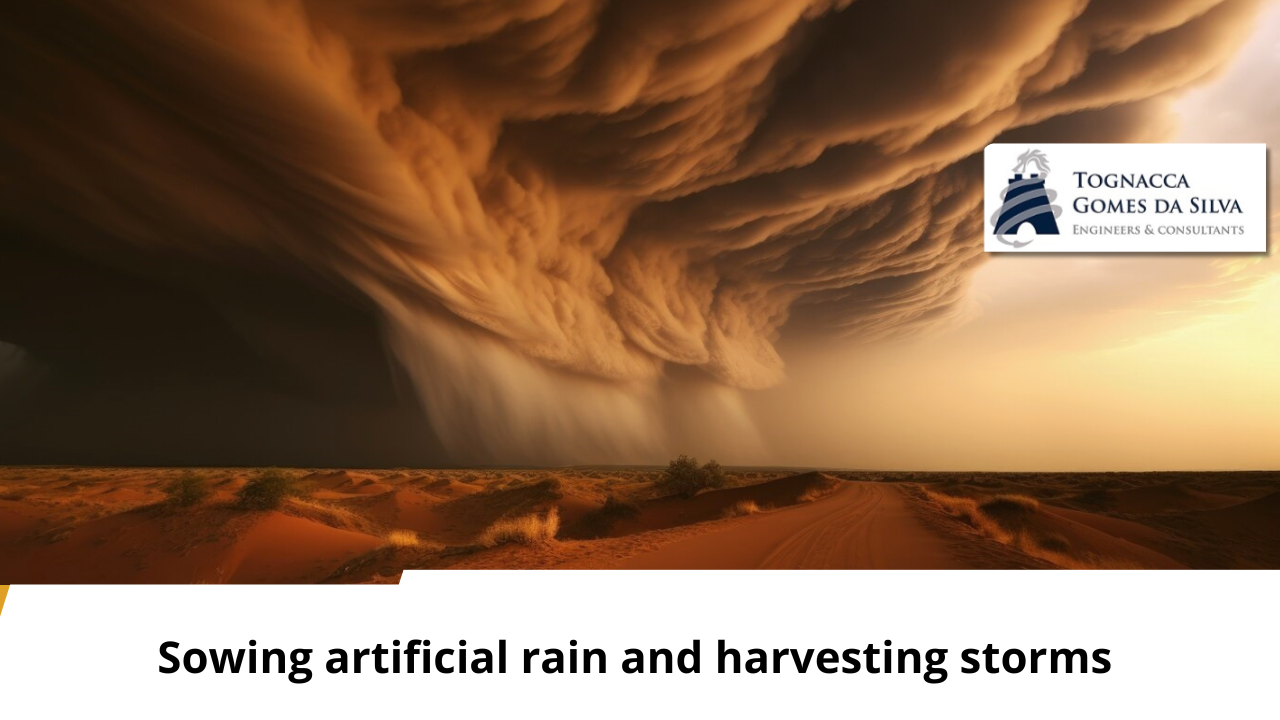Understand more about artificial rain technology and its possible relationship with extreme weather events, such as the great Dubai flood of April 2024.
Artificial rain, also known as cloud seeding, is a climate engineering technique that manipulates the atmosphere to induce precipitation. The practice involves the dispersion of “hygroscopic” substances. That is, those that remove moisture from the atmosphere. For example, there is silver iodide or sodium chloride, which serve as condensation nuclei in clouds. Thus, the substance facilitates the formation of rain where natural precipitation is insufficient or non-existent.
Understanding Cloud Seeding
The process begins with identifying suitable clouds through meteorological observations. Once identified, aircraft, rockets or ground-based devices disperse the seeding agents into the clouds. These particles act by catalyzing the condensation of water droplets, which cluster around these nuclei until they become heavy enough to fall as precipitation.
Therefore, this technique is applied with different objectives, from increasing humidity in arid regions to improving air quality and replenishing reservoirs. However, despite its potential benefits, artificial rain is not without controversy.
Pros and cons of artificial rain
Cloud seeding can significantly increase precipitation, with estimates of increases of 10% to 35% in dry areas. On the other hand, environmental implications are a major concern. The use of chemical products can lead to the contamination of natural habitats, negatively affect biodiversity and change local climate patterns in unpredictable ways. There are also debates about the long-term effectiveness of the technique and the risk of altering the natural balance of regions that depend on natural rainfall.
The controversial Dubai storm
Recently, a severe storm in Dubai attracted worldwide attention, with many attributing the event to intense cloud seeding activity in the region. The UAE, facing an extremely arid climate and high temperatures, has been leading the way in using this technology to mitigate its adverse weather conditions.

The storm, which caused flooding and significant damage, raised questions about the cause of the event. On the one hand, there is the hypothesis that the storm occurred due to cloud seeding operations. It’s an idea that makes sense, as these operations are often carried out to increase rainfall in the region. However, given the various “strange” weather phenomena in recent years, there is also the hypothesis that this huge storm was the result of climate change.
Global impact of artificial rain
Globally, artificial rain is seen as a potential solution to water scarcity in drought-prone areas. In China, for example, the government has used cloud seeding to try to mitigate the effects of prolonged droughts. In the United States, growers used cloud seeding for a time before agencies regulated the practice due to environmental and ethical concerns.
However, with or without artificial rain, with the constant warming of the Earth’s atmosphere, it is very possible that giant storms like the one in Dubai will continue to occur around the world.
( fonte: bruna oliveira/ digital agro)



